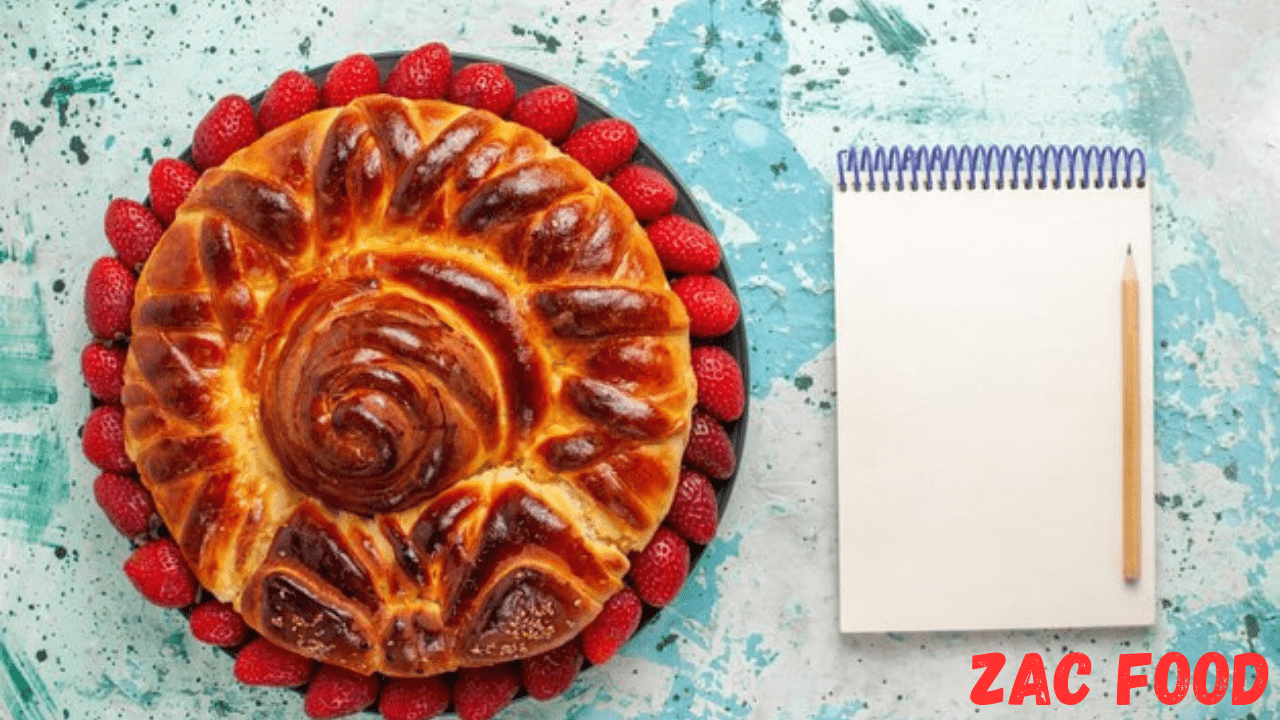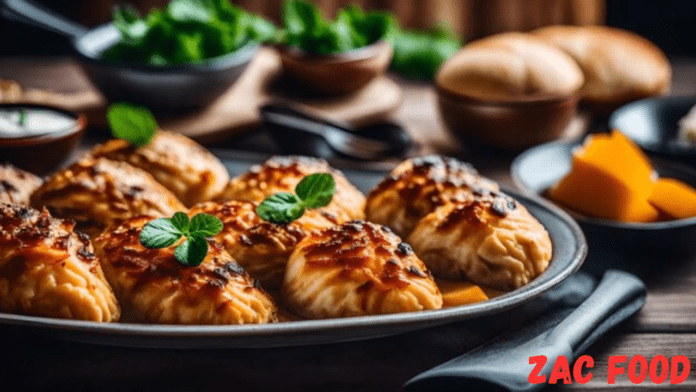If you’ve ever strolled through the charming streets of Switzerland in the early morning, the irresistible aroma of fresh-baked Gipfeli is unforgettable. Whether you’re a Swiss local or a curious foodie, mastering the gipfeli recipe will bring a taste of Switzerland right to your kitchen. With its delicate, buttery layers and a golden, crispy exterior, Gipfeli is similar to a croissant, but with its own unique flair. Ready to dive in? Let’s uncover the secrets to making the perfect Gipfeli at home!
Introduction to Gipfeli – Switzerland’s Favorite Pastry
What is Gipfeli?
Gipfeli is Switzerland’s beloved pastry, often compared to its French cousin, the croissant. However, it has a slightly denser texture and a subtler flavor, making it a favorite for breakfast or as a snack with coffee. Traditionally shaped like a crescent moon, Gipfeli offers a delicate, flaky exterior with a soft and buttery inside.

The Difference Between Gipfeli and Croissants
While they look similar, Gipfeli and croissants are not the same. Gipfeli is often slightly sweeter, and its dough doesn’t puff up as much as croissant dough, resulting in a denser, more compact pastry. Croissants typically use more butter, which contributes to their ultra-flaky layers, whereas Gipfeli has a slightly softer bite.
Why Homemade Gipfeli is Worth the Effort
Making Gipfeli at home might seem daunting, but the rewards are well worth it. By mastering the gipfeli recipe, you control the quality of ingredients, ensuring each bite is fresh, flaky, and filled with love. Plus, the satisfaction of creating this Swiss staple from scratch is unbeatable!
The Key Ingredients for Authentic Gipfeli
To master the perfect gipfeli recipe, you’ll need high-quality ingredients that work together to create the layers and texture that Gipfeli is famous for.
Flour: Choosing the Right Type
Opt for a high-quality bread flour or pastry flour. Bread flour helps create a strong dough that can hold the layers, while pastry flour keeps it tender and soft.
Butter: Swiss Quality for Flaky Layers
Butter is the heart and soul of any Gipfeli. For the best results, use European-style butter with a higher fat content (at least 82%), ideally from Switzerland. This rich butter helps create the tender, flaky layers.
Yeast and Leavening: Creating the Perfect Rise
Gipfeli relies on yeast to achieve its rise. Active dry yeast or instant yeast works well, but be sure to activate it properly for that light, airy texture. The yeast’s job is to create the small bubbles that make Gipfeli soft yet structured.
Milk, Sugar, and Salt: Balancing Flavor and Texture
Milk adds richness, while sugar gives a subtle sweetness that enhances the pastry’s flavor. A pinch of salt balances the sweetness and brings out the butter’s taste, creating a perfect harmony of flavors in the gipfeli recipe.
Step-by-Step Guide to Making Gipfeli Dough
Preparing the Ingredients and Tools
Before you start, gather your ingredients—flour, butter, yeast, sugar, salt, and milk—and have your rolling pin, baking sheets, and parchment paper ready. Everything needed to do the task will be in close proximity.
Mixing and Kneading the Dough
Mix the flour, yeast, sugar, and salt together in a big bowl. Gradually add lukewarm milk, mixing until a dough forms. The dough should be smooth and elastic after 8 to 10 minutes of kneading. This kneading develops gluten, which gives the Gipfeli its structure.
The Importance of Resting and Folding the Dough
Once kneaded, allow the dough to rest in the refrigerator for at least an hour. Resting relaxes the gluten and makes the dough easier to work with. The folding process (lamination) is essential for creating those distinct layers in the gipfeli recipe.
Rolling and Shaping the Gipfeli
How to Roll the Dough for Perfect Flakiness
Once the dough has rested, roll it out into a thin rectangle. Make sure the dough is even, so the layers puff up consistently. The thinner the dough, the flakier the Gipfeli.
Creating the Crescent Shape
To shape the Gipfeli, cut the rolled dough into long triangles. Starting at the wide end, gently roll each triangle toward the tip to form the crescent shape. Place the shaped Gipfeli on a baking sheet with parchment paper, ensuring the tip is underneath so they don’t unroll while baking.
Common Mistakes to Avoid While Shaping
Avoid rolling the dough too tightly; this can prevent the layers from forming properly. Additionally, be careful not to handle the dough too much, as the warmth of your hands can melt the butter, leading to less flaky layers.
The Secret to Perfect Layers: Laminating the Dough
The Science Behind Lamination
Lamination is the process of folding butter into the dough to create layers. As the Gipfeli bakes, the moisture in the butter turns to steam, puffing up the dough and creating the flakiness.
Techniques for Folding Butter into the Dough
To laminate the dough, place cold butter between layers of dough and fold it over several times. This creates alternating layers of dough and butter. Be patient and precise—this step is the key to mastering the gipfeli recipe.
Achieving Fluffy Layers Every Time
Keep the dough cold throughout the process. If it warms up too much, the butter can leak out during baking. Chilling the dough between folds ensures the layers remain distinct and airy.
Baking Gipfeli to Golden Perfection
Setting the Ideal Oven Temperature
Preheat your oven to 375°F (190°C). This temperature is hot enough to create the golden, crispy crust without drying out the inside.
How to Know When They’re Done
Your Gipfeli should bake for about 15-20 minutes, or until golden brown. They should be firm to the touch and have a slight hollow sound when tapped on the bottom.
Tips for Getting That Golden, Crisp Exterior
For an extra golden finish, brush your Gipfeli with an egg wash (a mix of beaten egg and a little water) before baking. This gives them a beautiful shine and enhances the crispness of the crust.
Creative Fillings for a Twist on Traditional Gipfeli
Sweet Fillings: Chocolate, Almond, or Fruit Jam
While traditional Gipfeli are often plain, you can experiment with fillings. For a sweet treat, try chocolate, almond paste, or your favorite fruit jam.
Savory Options: Ham, Cheese, and Spinach
If you prefer savory flavors, fill your Gipfeli with ham and cheese, or a mix of spinach and feta. These fillings can turn a breakfast pastry into a satisfying meal.
How to Properly Add Fillings Without Ruining the Layers
Be careful when adding fillings—too much can overwhelm the dough and prevent it from baking properly. Place a small amount of filling near the wide end of the triangle, then roll gently.
Serving and Enjoying Your Homemade Gipfeli
Traditional Swiss Accompaniments
Serve your homemade Gipfeli with a cup of freshly brewed coffee or a glass of cold milk. In Switzerland, Gipfeli are often enjoyed with butter and jam on the side.
Best Times of Day to Serve Gipfeli
Gipfeli makes for a perfect breakfast or mid-morning snack. It’s light yet satisfying and pairs wonderfully with a hot drink. You can also serve it at brunches or as an afternoon treat.
Pairing Gipfeli with Coffee or Tea
Gipfeli’s buttery, flaky texture pairs exceptionally well with a strong cup of coffee or a mild tea. The rich pastry complements the bitterness of coffee, making it a match made in heaven.
Read More: Healthy Mediterranean Diet Sweetener for Coffee: Your Ultimate Guide
FAQs
There’s nothing quite like the satisfaction of making your own batch of homemade Gipfeli. With its delicate layers, rich buttery taste, and perfect crisp, mastering the gipfeli recipe allows you to bring a little piece of Switzerland into your kitchen. Whether you enjoy them plain or with a creative filling, your homemade Gipfeli will surely impress family and friends alike.


[…] Gipfeli Recipe Secrets: Create the Perfect Swiss Pastry at Home! […]